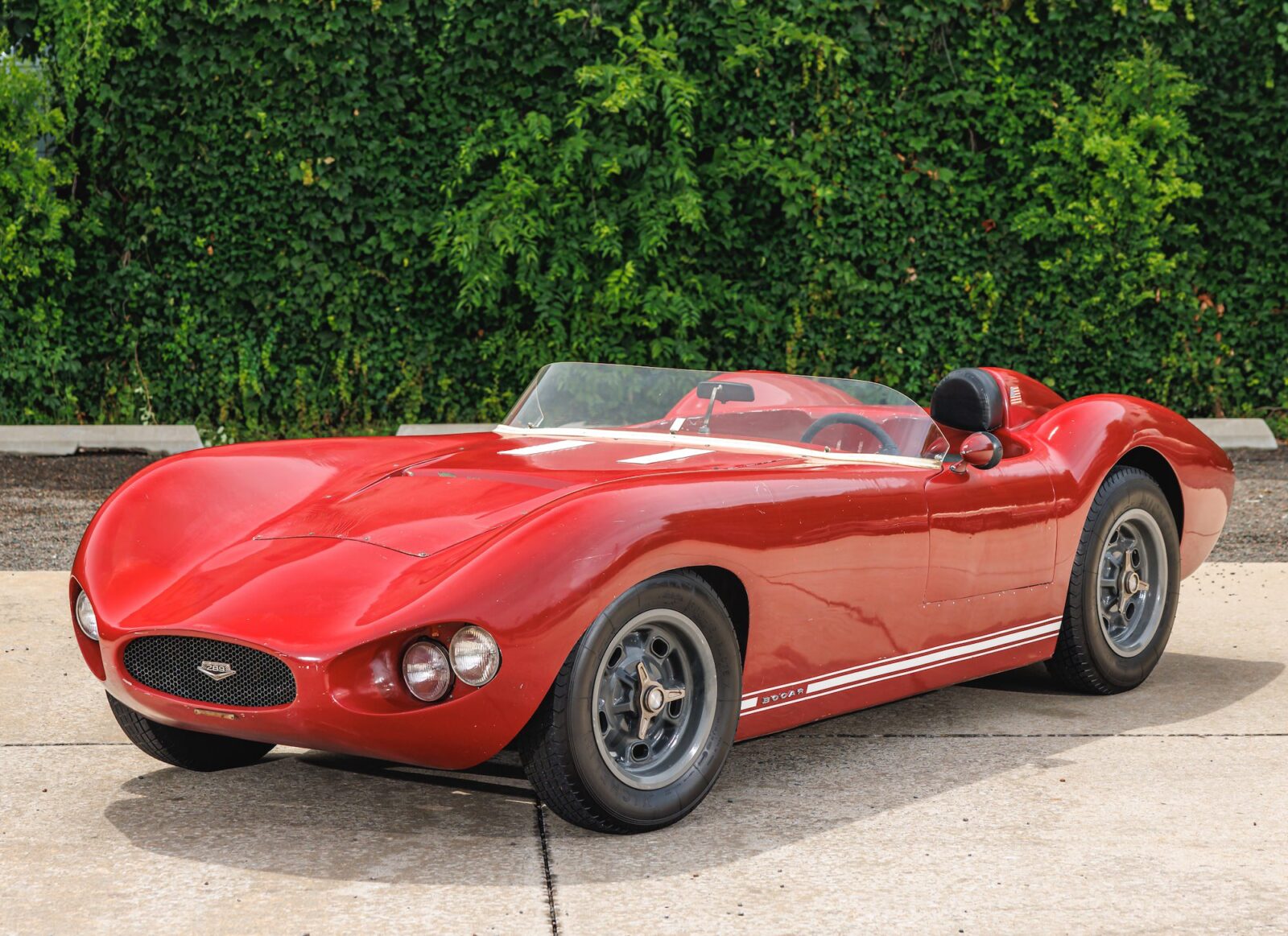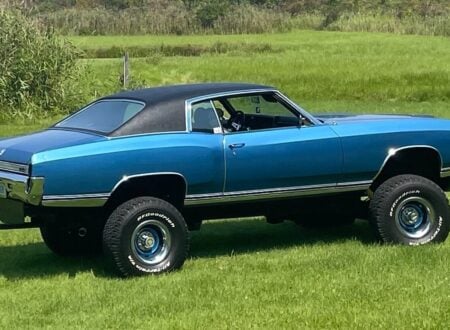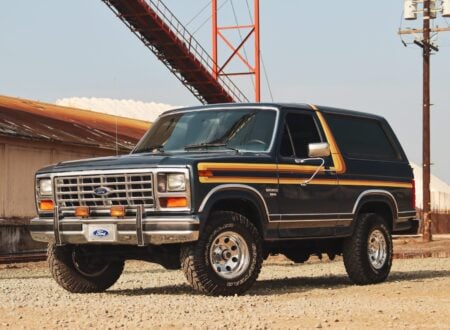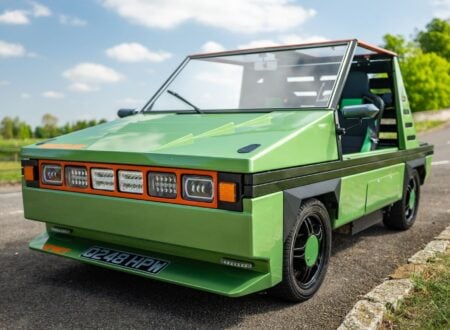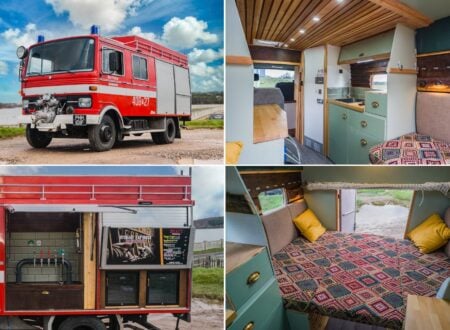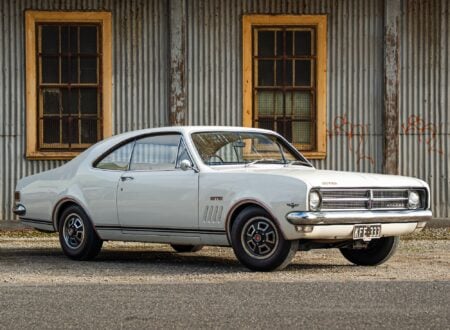This is an original 1959 Bocar XP-6, a little-known American sports racing car developed by Bob Carnes in Lakewood, Colorado to challenge the dominant roadsters coming out of Europe at the time.
Thanks to their high-output V8s and low curb weights the Bocar XP-series of cars would prove highly competitive, setting the speed record of 175 mph (282 km/h) on the beach of Daytona in 1960, and finishing second to a Jaguar D-Type in the first televised Daytona race.
Fast Facts – The Bocar XP-6
- The Bocar XP-6 was a rare American sports racing car developed by Bob Carnes in Colorado in the late 1950s. It was designed to compete with European sports cars and achieved notable success, setting a speed record of 175 mph at Daytona in 1960 and finishing second in the first televised Daytona race.
- Bob Carnes, a semi-professional racer, created Bocar after modifying existing cars like his “Jagillac” (a Jaguar with a Cadillac engine). He developed several prototypes (X-1 to X-4) before launching the production model XP-5, which featured a chromoly steel spaceframe, fiberglass body, and typically, a Corvette V8 engine.
- The specific XP-6 featured in this article began as an XP-5 and was modified by Bocar. It uniquely houses a Ford 289 V8 engine, making it the only known Bocar with this powerplant. The car was used to promote Ford dealerships in Colorado before competing in SCCA races.
- After 43 years in storage, the car was rescued in 2015 and underwent mechanical restoration. Its original patina was preserved to maintain its 1960s character. The XP-6 is now headed to auction with RM Sotheby’s, with an estimated value between $125,000 and $150,000.
Bob Carnes
When he set out to start his own sports racing car company, Bob Carnes opted to simply use some of the letters from his own first and last name to create a unique and memorable one-word name Bocar (Bob Carnes).
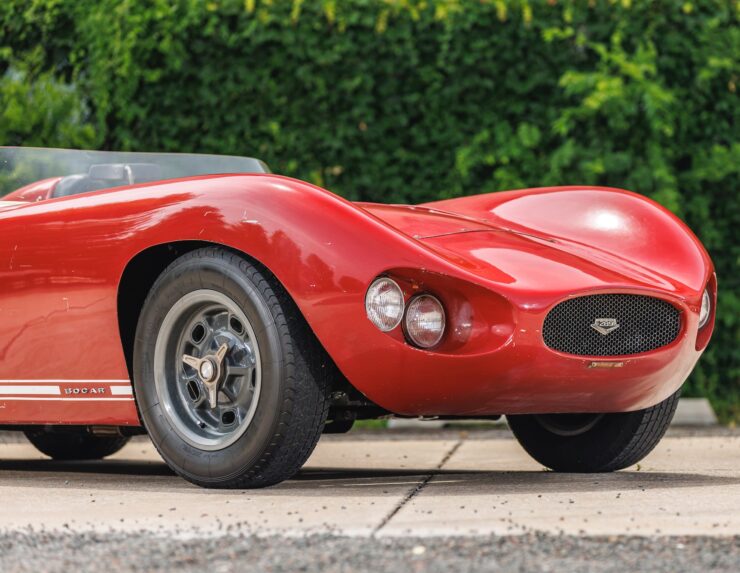

Bob was a semi-professional racing driver based out of Lakewood, Colorado who started out in a Glöckler-Porsche Spyder competing in local Colorado hill climbs and road races. He upgraded to a Jaguar XK120 in 1953 and took an impressive 3rd place at the Pikes Peak Hill Climb that year.
Although the XK120 was a significantly quicker car than the Glöckler-Porsche, Carnes was unhappy with the amount of power he was getting from the 3.4 litre Jaguar XK straight-six.
Much to the chagrin of the purists he removed the original engine and installed a Cadillac V8, renaming the car “Jagillac”, then justifying the engine transplant by winning the Buffalo Bill Hillclimb in 1956.
Despite his success, Carnes wanted more from the car, and he quickly realised he would need to build his own car from the ground up. He began the Bocar project officially in 1957 and had his first car ready by 1958, it was called the X-1, and it was quickly followed by the X-2 and X-3.
Bob and his team were learning on their feet, and by the time they got to the X-4 they began selling cars to customers – approximately 5 X-4s were built – although exact factory records were lost to time.
The first proper production model was the Bocar XP-5. Bob and his team developed a new welded chromoly steel spaceframe for the car with a lightweight fibreglass body, the independent front suspension was creatively sourced from the rear end of the Volkswagen Beetle, and the rear sits on four trailing arms and a Watts linkage system.
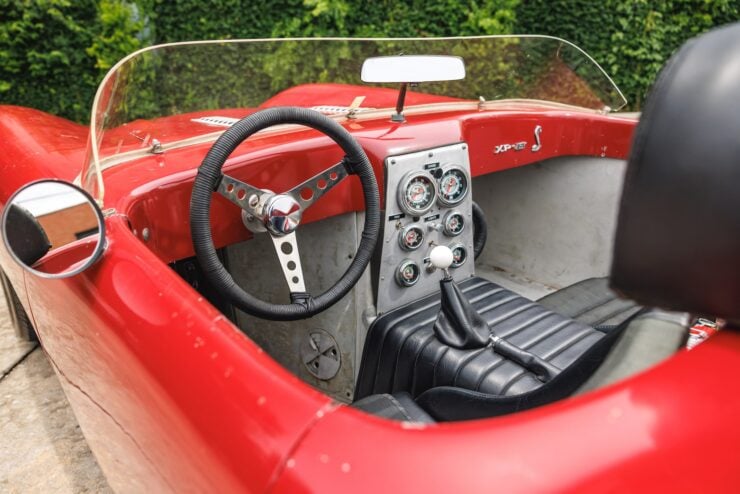

Engines could be specified by the client, however the most common choice was the rock-solid 283 cubic inch Corvette V8 capable of 290 bhp. The XP-5 sits just 34 inches tall – not including the 4 inch windshield, and the engine was installed as far back in the body as possible to provide optimal weight distribution for racing.
The Bocar XP-6 Shown Here
The car you see here is one of very few examples of the Bocar XP-6. In fact, this car started out as a Bocar XP-5 and was later modified at Bocar to lengthen the wheelbase and modify the body to suit, it was then officially designated an XP-6 by Bob Carnes.
The car would have an engine installed by Ivan Frank who opted to use then then-new Ford 289 cubic inch (4.7 liter) V8 mated to a Borg-Warner T-10 4-speed manual transmission. This is believed to be the only Bocar fitted with a Ford 289, with most others receiving a Chevrolet V8.
The engine was fitted with an Offenhauser intake manifold and XP-6-branded valve covers, and it was sourced from Garnsey & Wheeler Ford of Greely, Colorado.
Interestingly, after it was completed, this car was used as a display vehicle by Colorado-area Ford dealerships in the mid-1960s to show off the 289 V8 that was also powering the Mustang and a number of other Fords at the time.
The car was then entered into a number of SCCA races before finding its way into longterm storage by 1972. There it would remain for 43 years before finally being saved in 2015 by a new owner, who would send it off to it Farland Classic Restorations of Greely, Colorado for some mechanical restoration work.
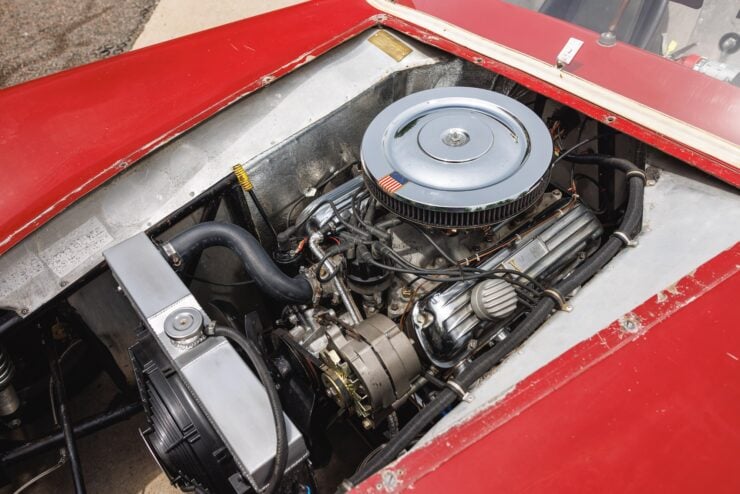

During this time it was decided to keep the patina of the original bodywork and interior in place, as a result the car has kept its 1960s character in place rather than looking like it was built recently.
It’s now due to roll across the auction block with RM Sotheby’s in mid-August in Monterey, California with a price guide of $125,000 – $150,000 USD. If you’d like to read more about it or register to bid you can visit the listing here.
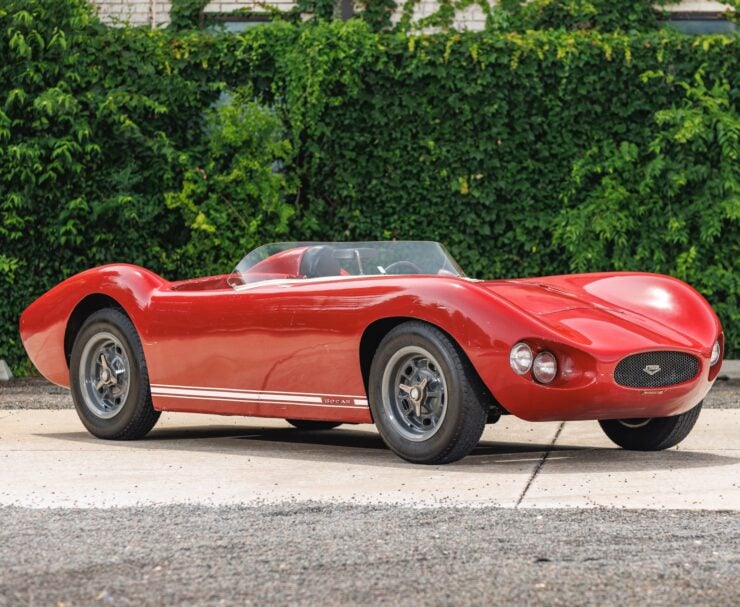
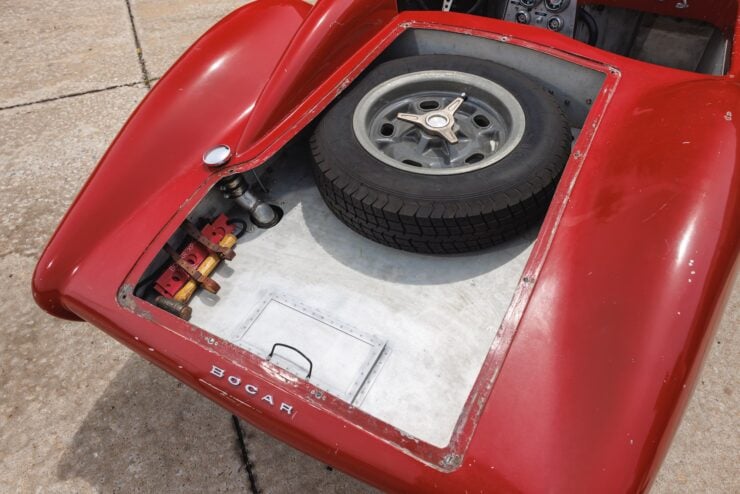
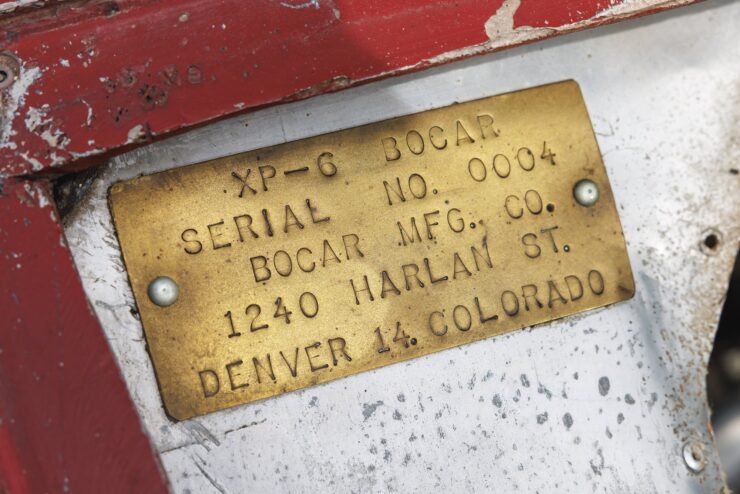
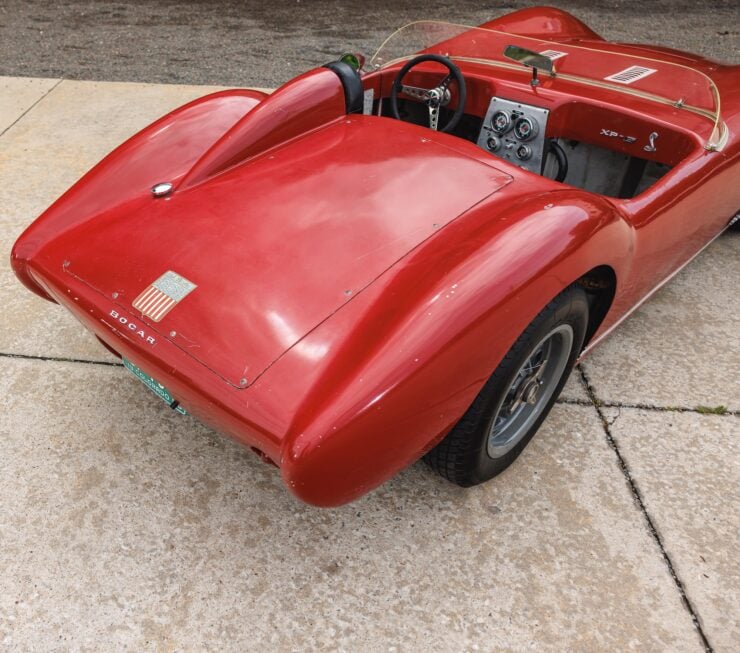
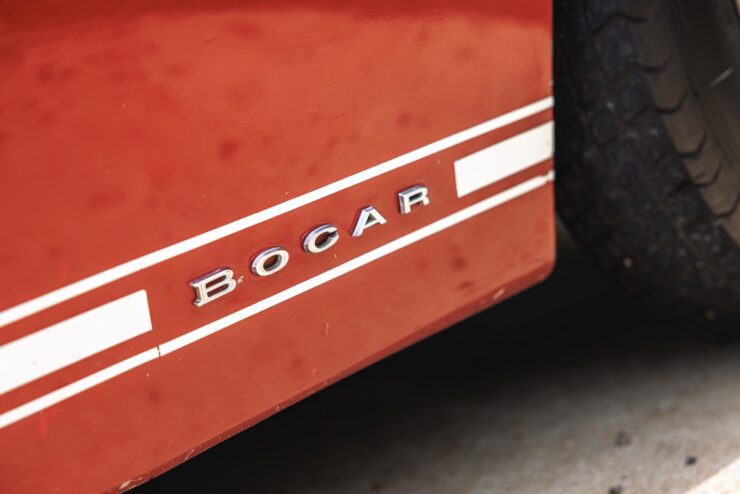
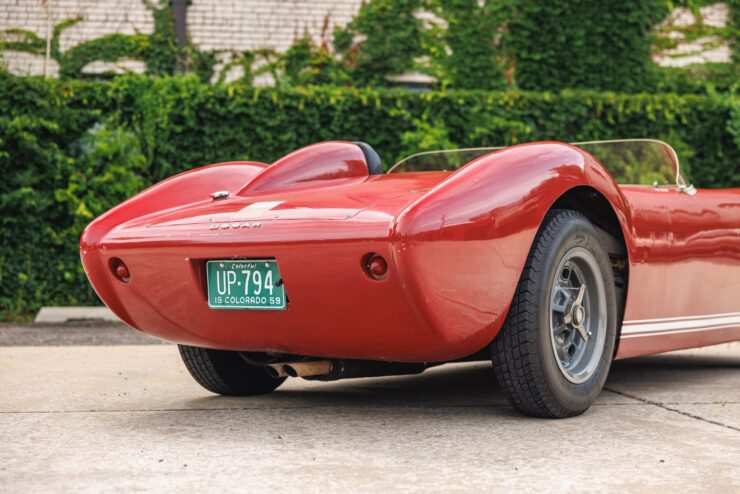

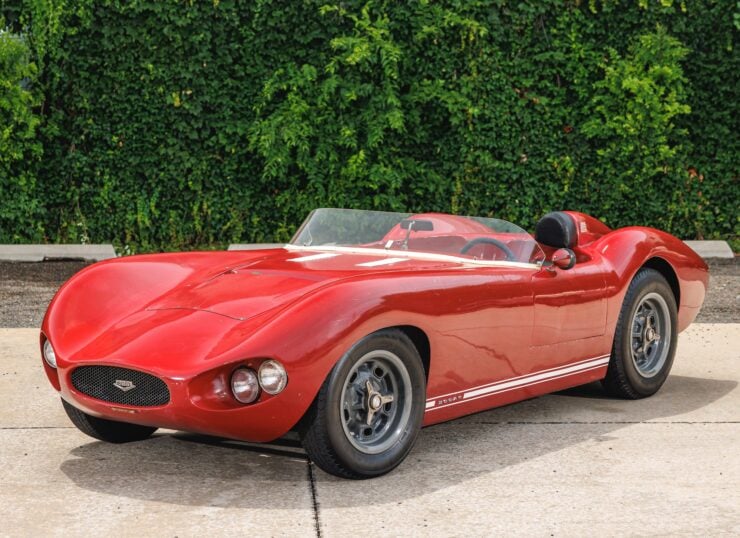
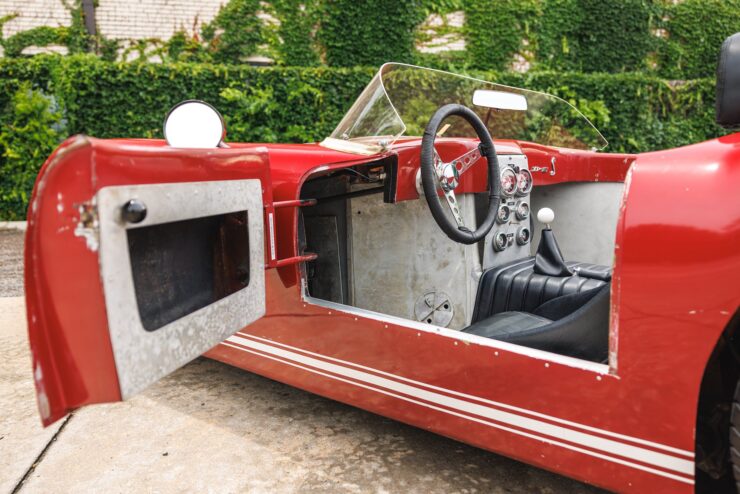
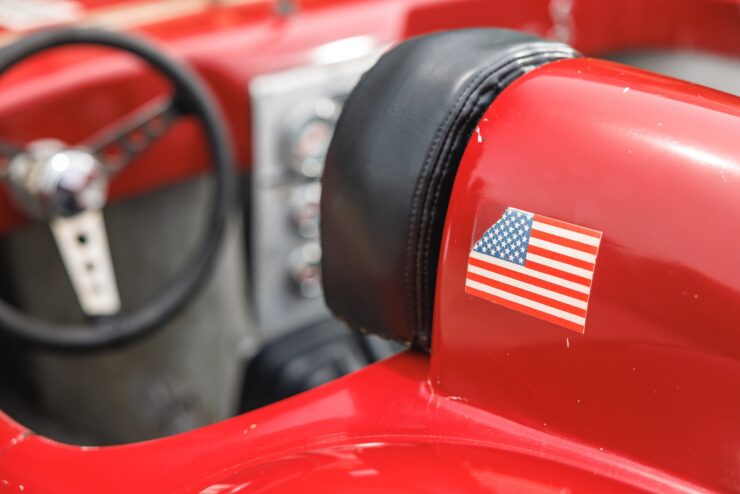
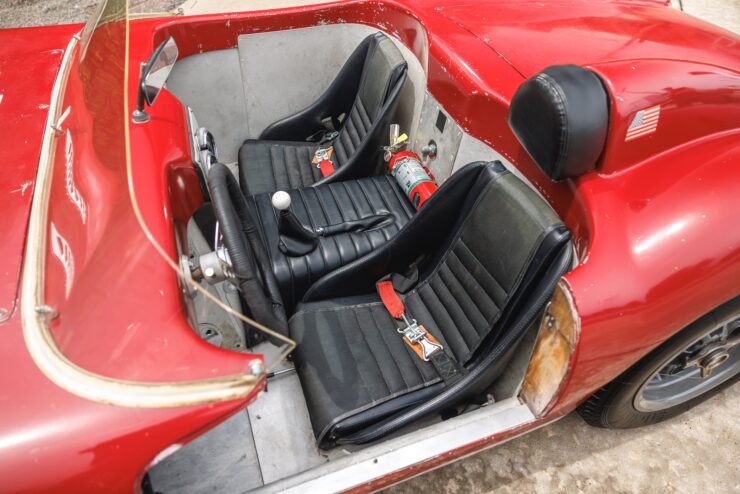
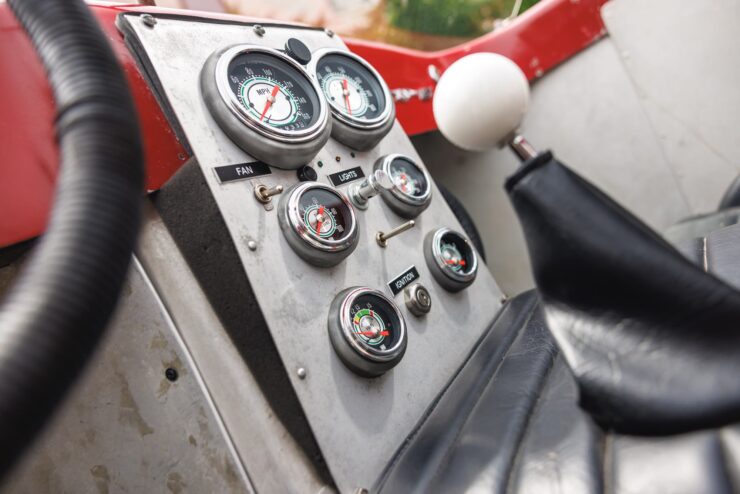
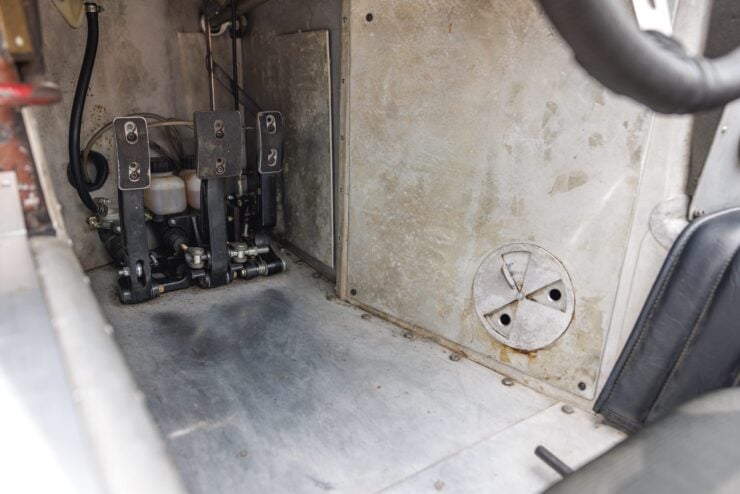
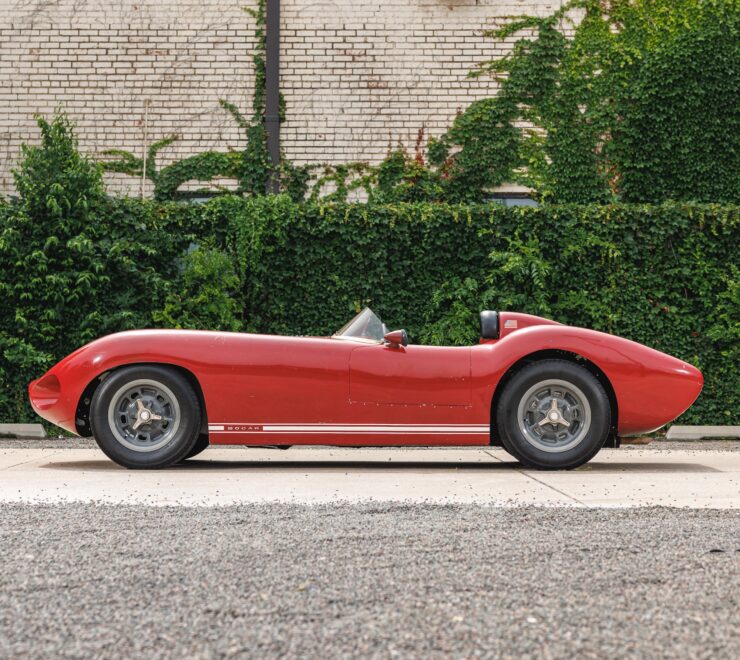
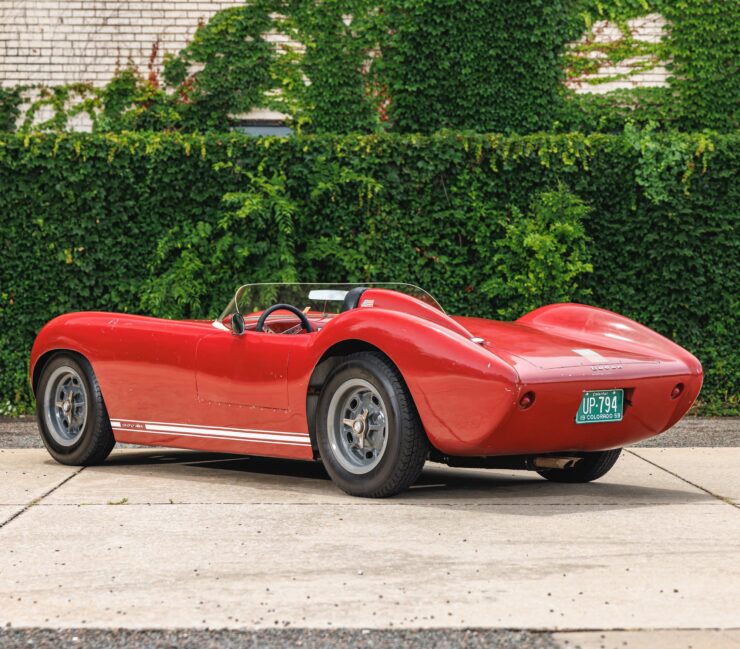
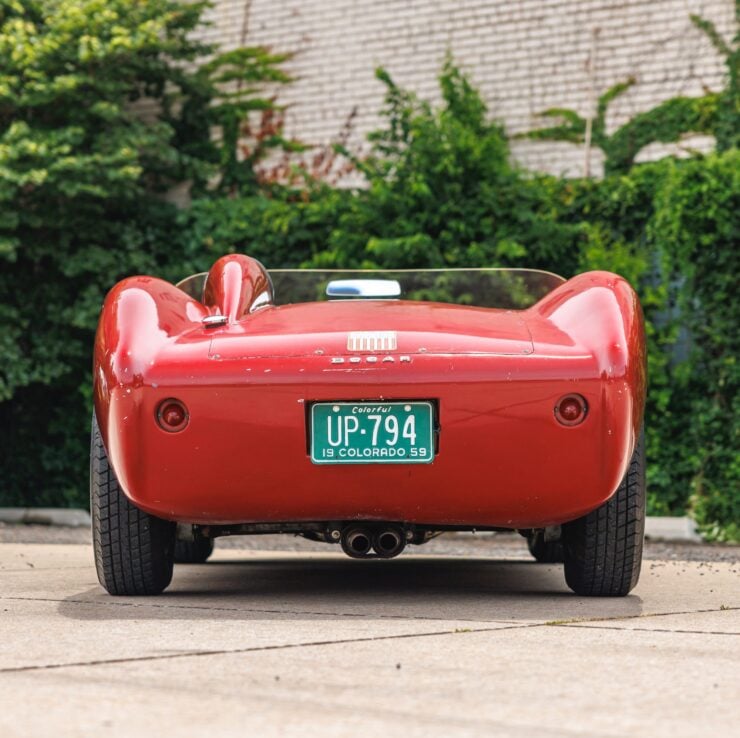
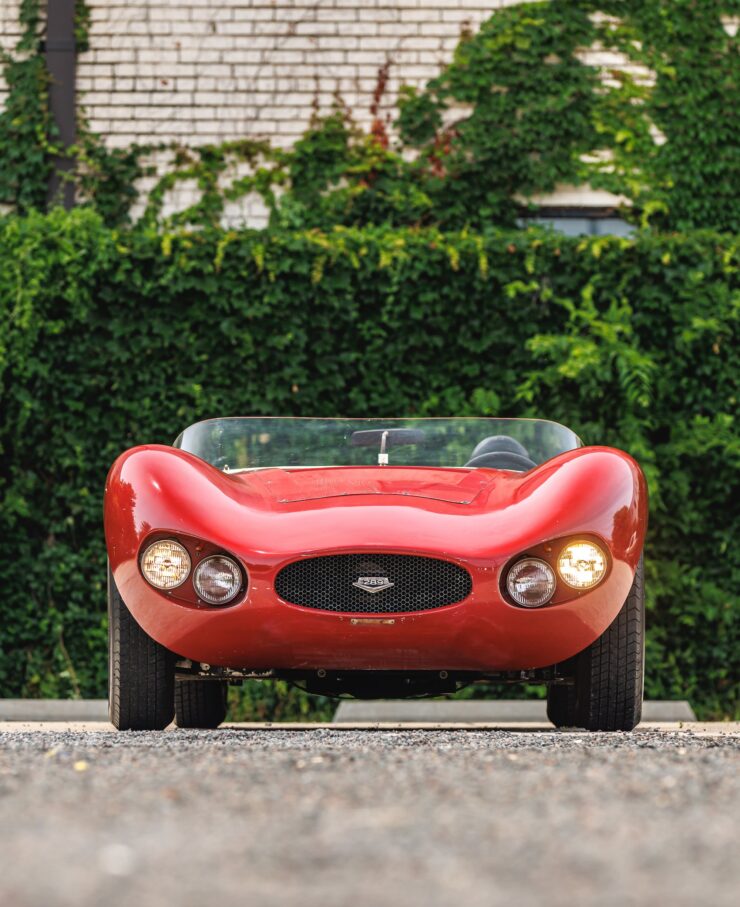
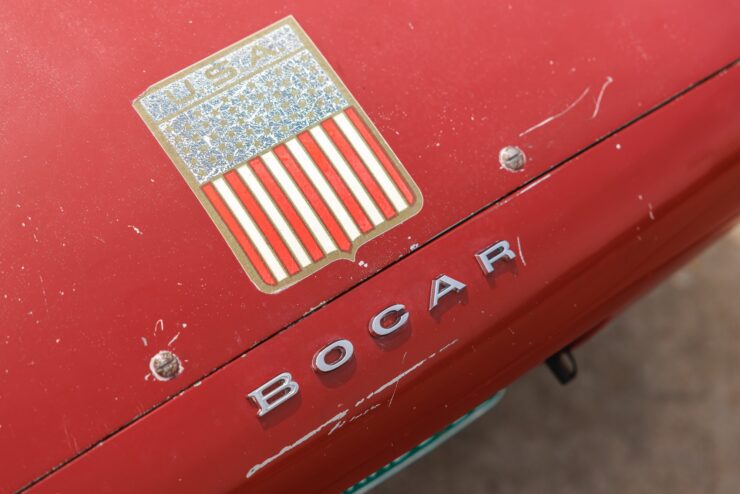
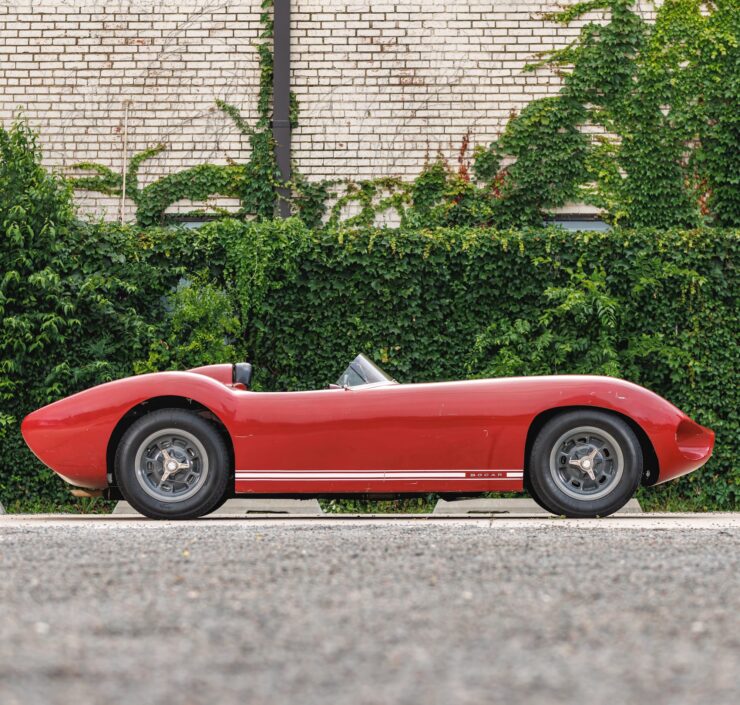
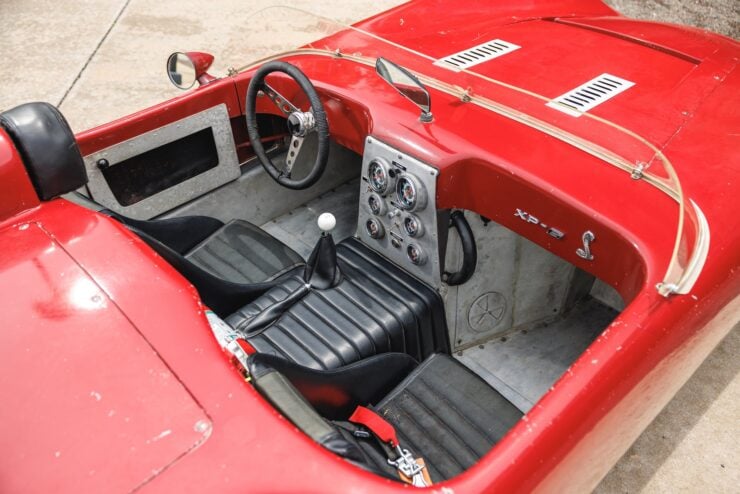
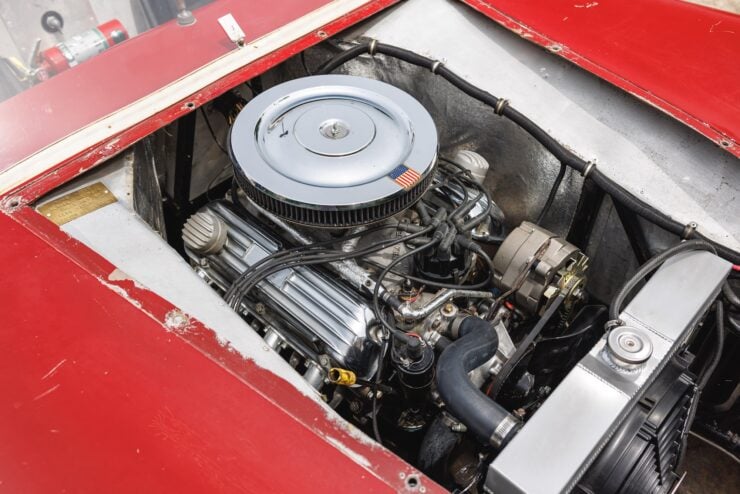
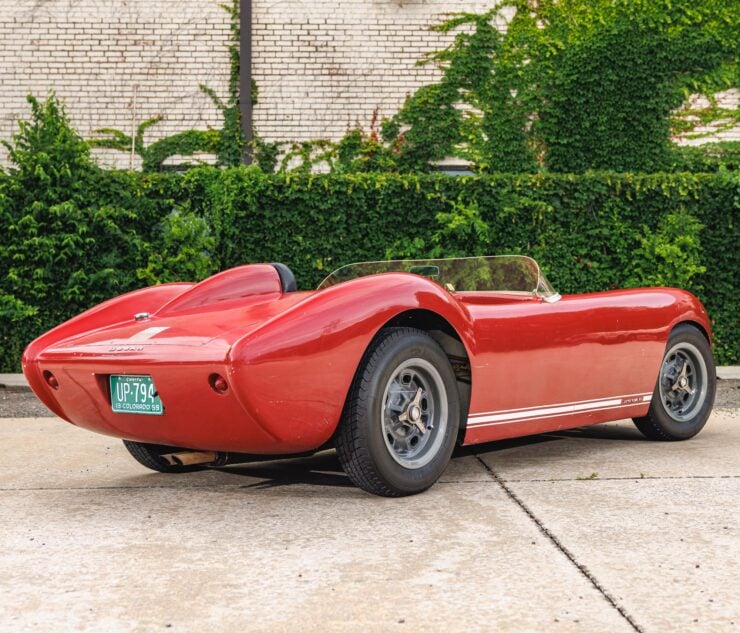
Images: Theodore W. Pieper ©2024 Courtesy of RM Sotheby’s

